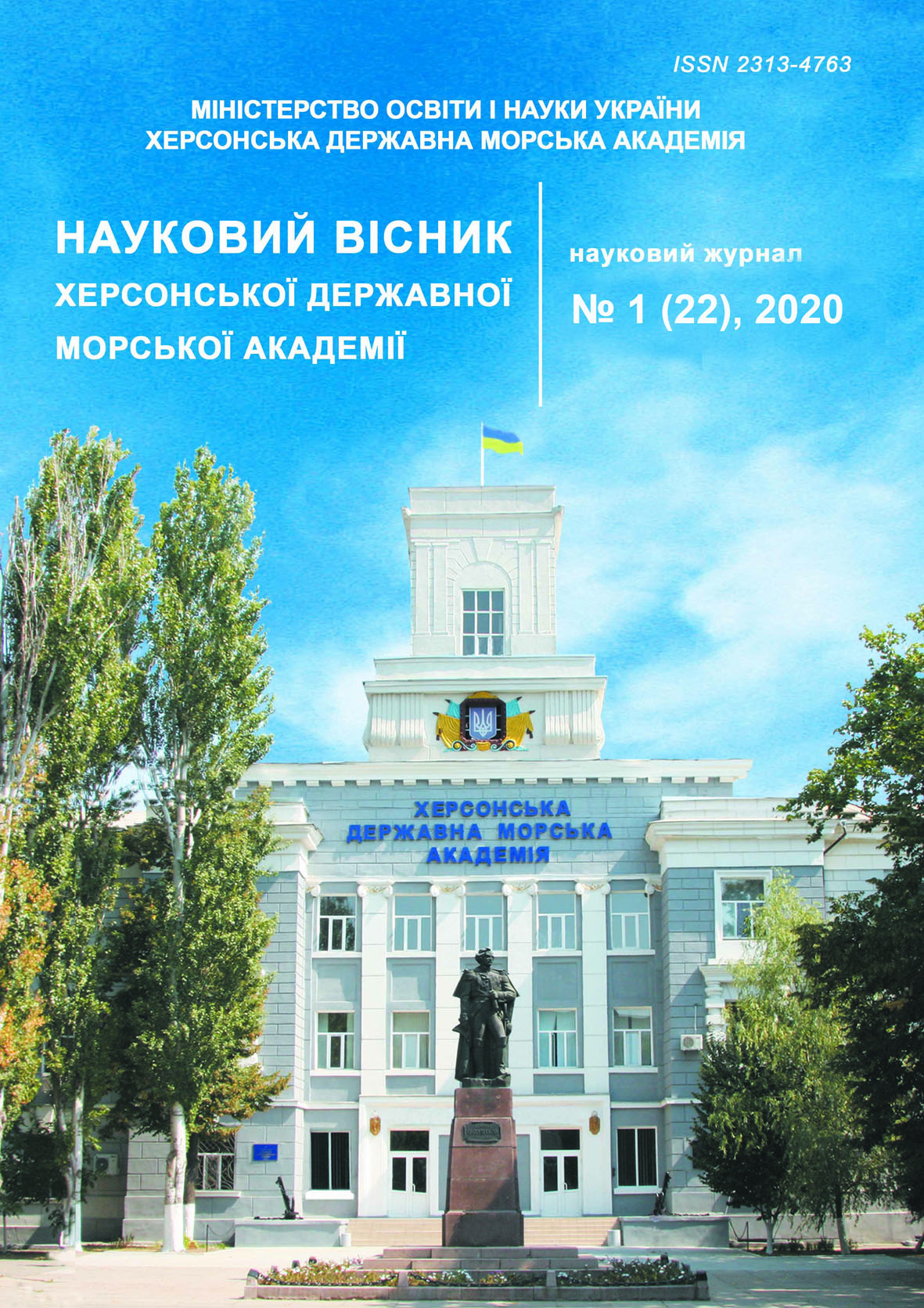IMPROVING THE CLEANING EFFICIENCY OF THE DIESEL ENGINE PURGE AIR COOLER
https://doi.org/10.33815/2313-4763.2020.1.22.120-130
Abstract
In order to increase the mass of the air charge, one has to increase its density. Therefore, the density of the air may be increased by increasing the air pressure and reducing its temperature.
The temperature of the purge air is being decreased in the air cooler. With the lapse of time, its performance efficiency drops due to the contaminant pollution of heat transfer elements, which as a consequence, leads to the diesel engine power reduction. The established procedure for cleaning the air cooler does not ensure a complete cleaning of heat exchangers, especially in hard-to-reach places, and manual mechanical cleaning is rather time consuming and requires engine cutoff over a protracted period of time. Thus, improving the efficiency and simplifying the complexity of the air cooler cleaning procedure is considered to be an urgent task to complete.
In order to reduce those shortcomings, the modernization of the air cooler cleaning system is being considered. The upgrade being suggested involves an installation of auxiliary atomizing devices on both sides of the cooling element, i.e., in those places where the air cooler is being polluted the most.
The purge air temperature increase leads to a decrease in the engine power, increased fuel consumption and accumulation of deposits in the exhaust manifold and flue pass, which consequently may contribute to a spontaneous combustion.
Taking into consideration the demand for regular cleaning procedure of the cooling element, the serial system is time consuming. In addition to cleaning by means of atomizers, it also involves systematic disassembly of the cooler and manual cleaning of the elements.
The modernization being suggested allows to increase the cleaning efficiency of the blower air cooler of the diesel engine by installing additional atomizers of detergent near the side surfaces of the cooling element.
Modernization procedure is not a complicated one and its implementation is possible on existing vessels by the engine crew taking into account the necessity of a long-term stopover of the vessel for maintenance and repair.
The solution is universal and may be implemented on ships with the gas-turbocharged engines with purge air cooling system.
The application of an upgraded system will also reduce the complexity of the cleaning procedure of the air cooler cooling elements by avoiding manual mechanical cleaning of hard-to-reach cooling surfaces.
References
2. Voznitskii I.V. Sovremennye dvukhtaktnye malooborotnye dvigateli. SPb.: Morkniga, 2006.
3. Voznitskiy I.V. MAN B&W Dvigateli modelnogo ryada MS 50-98. Konstruktsiya, ekspluatatsiya i tehnicheskoe obsluzhivanie. Morkniga, 2008. – 263s.
4. Instruktsii dlya dizeley tipa 50-98 MS. Komponentyi i obsluzhivanie. Izdanie 8S. Chast 1 MAN B&W Diesel A/S. kopengagen, Daniya – 241s.
5. Instruktsii dlya dizeley tipa 50-98 MS. Komponentyi i obsluzhivanie. Izdanie 8S. Chast 2 MAN B&W Diesel A/S. kopengagen, Daniya – 249s.
6. www.vestas.biz. Vestas aircoil A/S. Technical data for charge air cooler LKMY20/34A4-A-EK-2584 . – 14p.
7. Instruction HYNDAI-MAN B&W Diesel engines operation. 349p.
8. Instruktsii dlya dizeley tipa 50-98 MS. Ekspluatatsiya. Izdanie 40S. Chast V,VI MAN B&W Diesel A/S. Kopengagen, Daniya – 339s.
9. Sudovye energeticheskie ustanovki. Rumb V.K , Iakovlev, G.V., Sharov G.I. i dr. Chast I. Sudovye dizelnye energeticheskie ustanovki: Uchebnik, SPbMGU. – SPb.: 2007.
10. Voznitskii I.V., Mikheev E.G. «Sudovye dizeli i ikh ekspluatatsiia». M.: ransport – 1990.
11. Klaus Mollenhauer, Helmut Tschoeke. Handbook of Diesel Engines. Springer-Verlag Berlin: Heidelberg, 2010. 634 р.
12. Holland, P.; Wachtmeister, G. ; Eilts, P.: Untersuchungen zum Einfluss des Aufladesystems auf das dynamische Verhalten mittelschnellaufender Viertakt-Dieselmotoren. Proceedings of the 8th AufladetechnischeKonferenz Dresden 2002, pp. 31–40.
13. Stutz, W. ; Staub, P.; Mayr, K.; Neuhauser, W.: Neues 2-stufiges Aufladekonzept fur PKW-Dieselmotoren. Proceedings of the 9th Aufladetechnische Konferenz Dresden 2004, pp.211–228.
14. Meier, E.: Turbocharging Large Diesel Engines – Stateof the Art and Future Trends. Brochure from ABB Turbo Systems Ltd. Baden (Switzerland) 1994.
15. Friedrich, I.; Pucher, H.: Echtzeit-DVA– Grundlage der Regelung kunftiger Verbrennungsmotoren. Tagungs-band der MTZ-Konferenz – Motor 2006. (June 1 -2, 2006, Stuttgart) Der Antrieb von morgen, Wiesbaden:Vieweg Verlag 2006, pp. 215–224.






